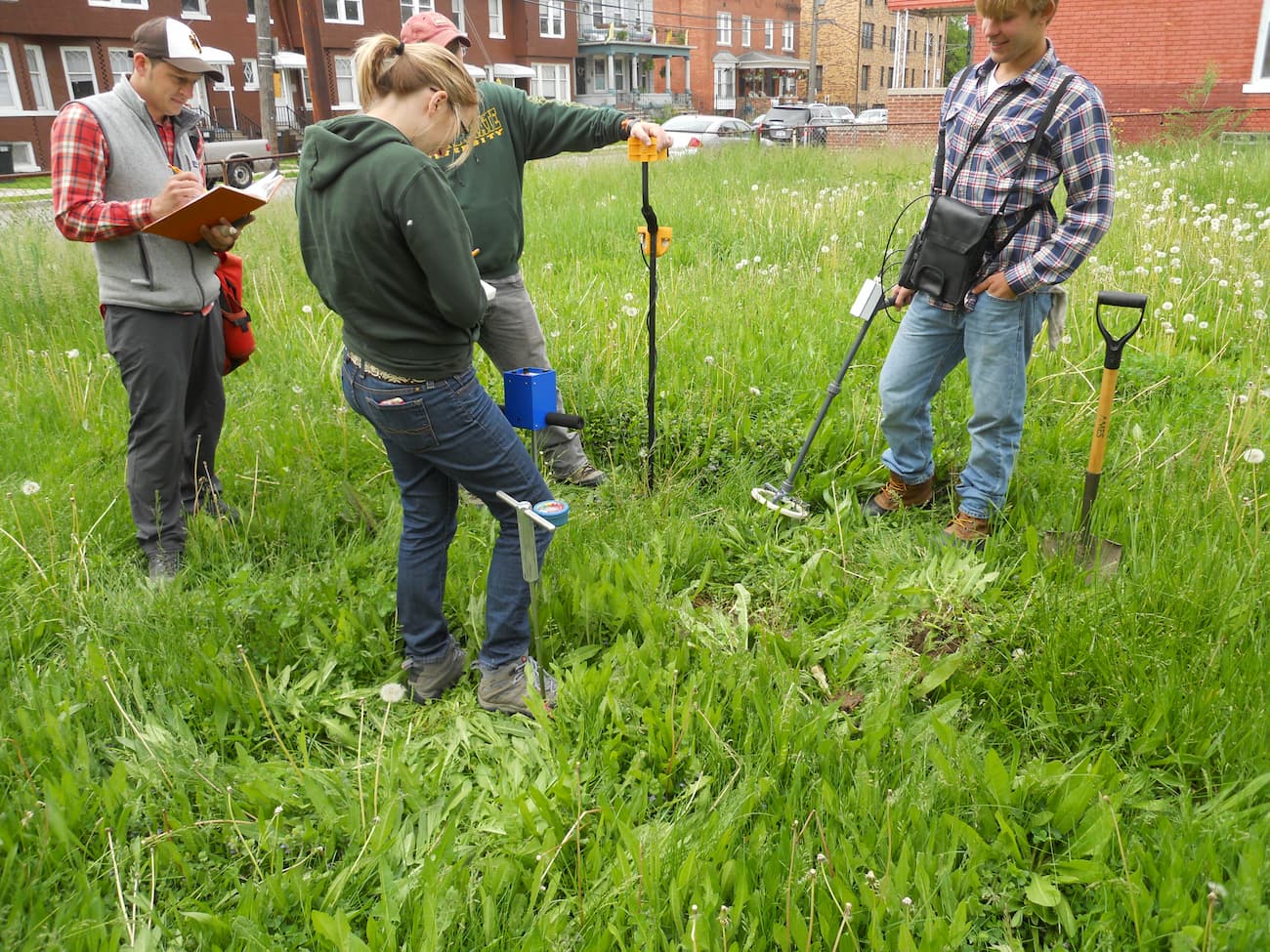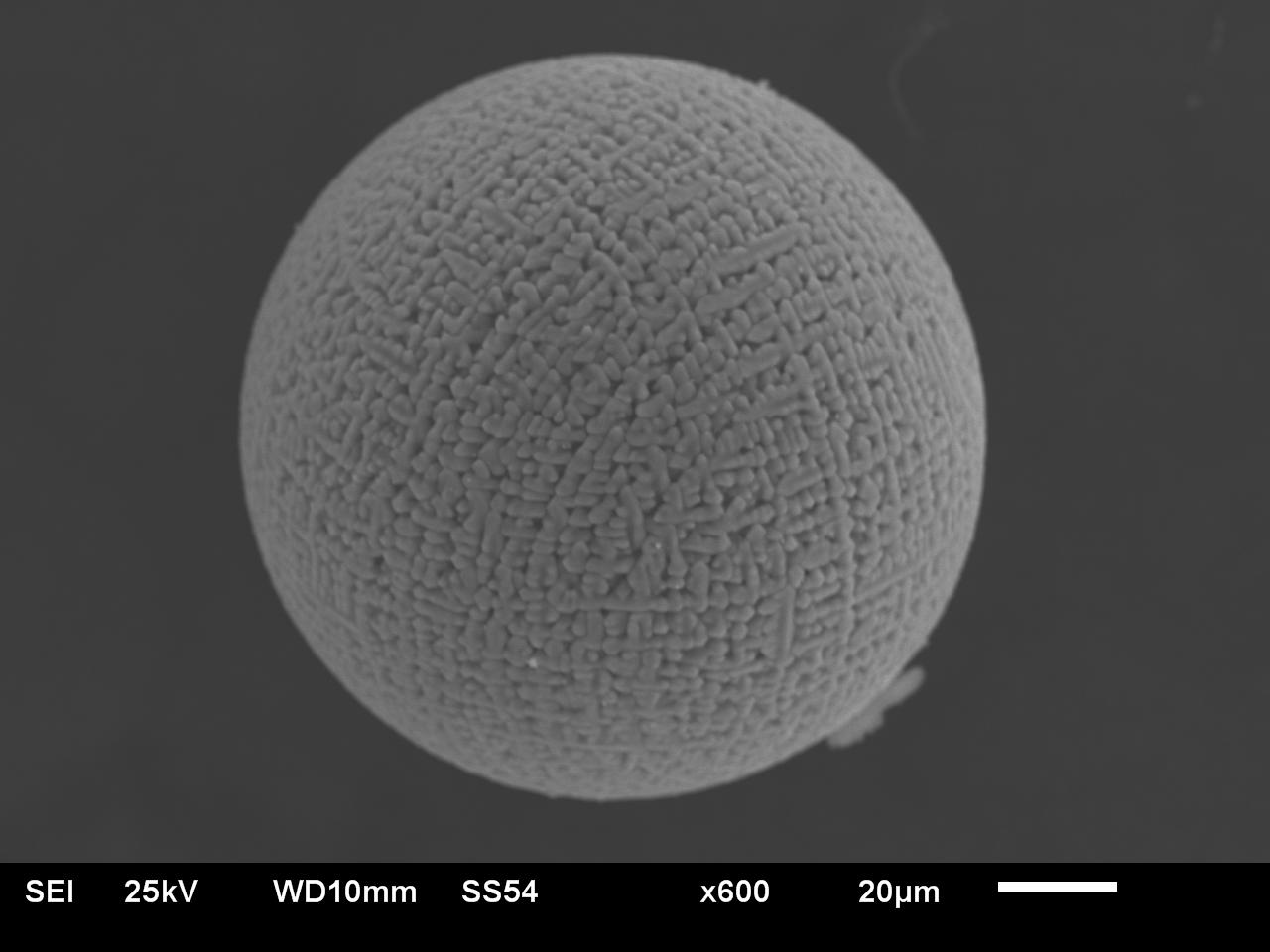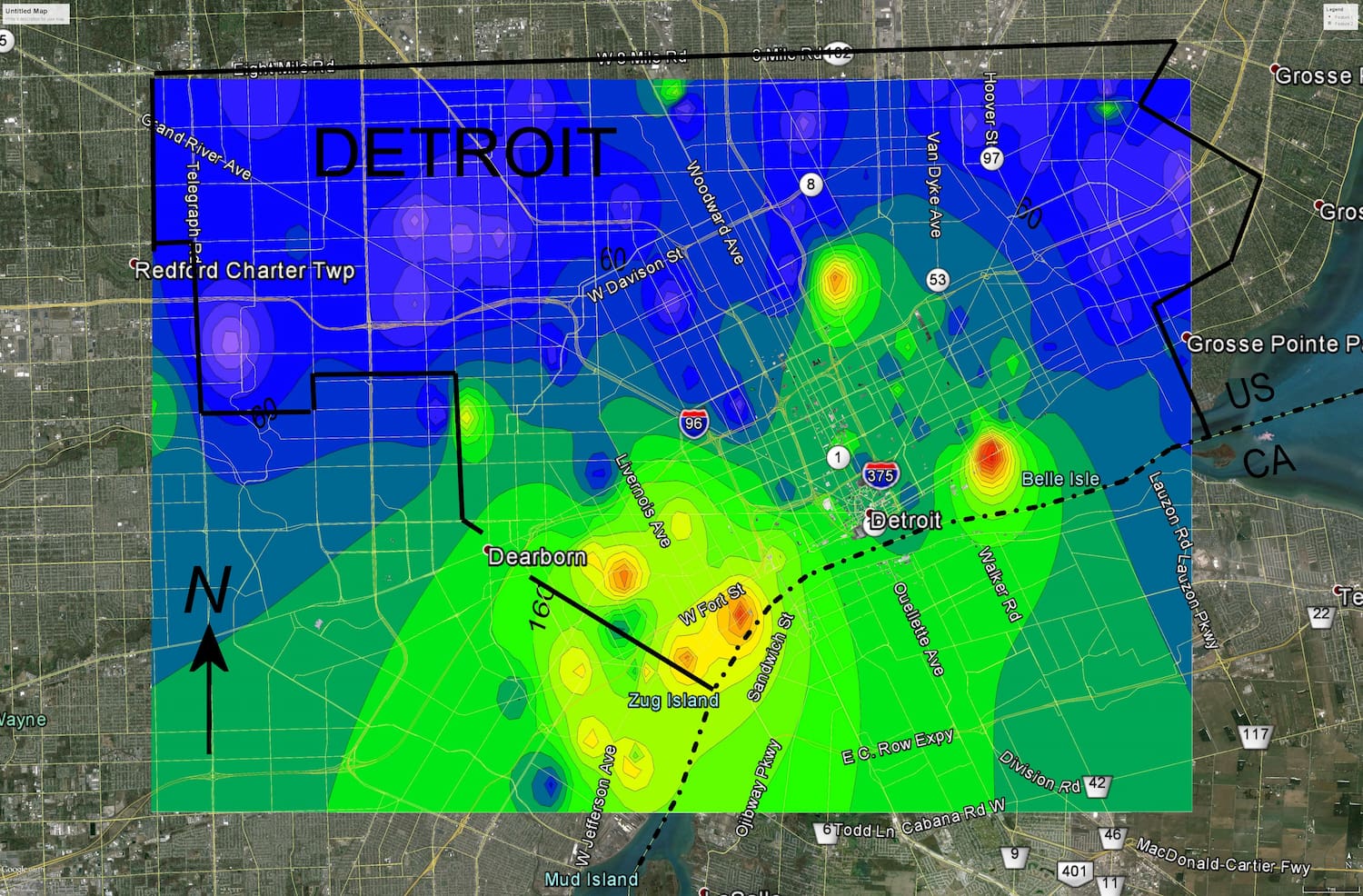Secrets in the soil: Wayne State geology research examines Detroit dirt

Steve Brewer and Phil Wilt in the field.
Invisible to the human eye, millions of tiny particles are floating through the air. While most are harmless, some of these particles include fly ash, a product of coal combustion that could potentially cause negative health effects.
Armed with a team of student researchers, geology professor Jeffery Howard is examining Detroit's soils for radioactivity and heavy metal content from fly ash. The team was able to create a map of the city's fly ash contamination using electron microscopy.
"In an earlier study, we tried using soil magnetic susceptibility to make a soils map," said Howard. "We accidentally discovered that the soils in a large area of Detroit appear to be contaminated with fly ash, which presumably is from coal-burning operations that have gone on for decades."
Coal contains uranium and other radioactive isotopes, so when it is burned those elements are concentrated in the ash. Fly ash contaminated soils could be creating high background radiation since they are abnormally high in heavy metals, which has adverse health effects.
"The concern is that the fly ash contaminated soil will be eroded and that the fly ash particles will wash into the street, dry out, become dust, blow around and then we all breathe them in," Howard said.
With further research, Howard's team can pinpoint which areas in Metro Detroit have higher concentrations of fly ash through soil mapping.

Howard plans to continue studying glacial geology and how it relates to radon and other types of soil radioactivity. His team will continue to study street dust in Detroit and hopes to expand their studies of micro-artifacts in urban soils to other cities.
Geology student Ben Gaskevicius assists Howard with this research. After taking classes with Howard this past summer, Gaskevicius was motivated by his professor's enthusiasm for sedimentology and decided to get involved.
"His drive for knowledge about soil science and its applications made it very enticing for me to learn more about his ongoing research and eventually become part of it," said Gaskevicius.
Gaskevicius is currently involved in the characterization of urban soils where he prepares soil samples for mineral analysis.
"I work on soil and pulverized artifact sample preparation for analyses of soil magnetic susceptibility," said Gaskevicius. "I will soon have the opportunity to learn more about heavy liquid separation processes that are much more telling when it comes to the mineralogical characteristics of urban soils."
For Gaskevicius, studying urban soils means uncovering its story of intentional or unintentional manipulation from demolitions to the remnants of building materials from coal-burning plants.
"What I enjoy most about the research is its connection to humanity and the footprint we leave in the shallow soils of modern urbanized environments pun intended," said Gaskevicius. "I'd urge any ambitious student to take a chance on research. There's a lot more to it than meets the eye and it can be an invaluable experience."
To learn more about urban geology research at WSU, visit s.wayne.edu/urbangeology.

Melanie Barnett, marketing and communications associate